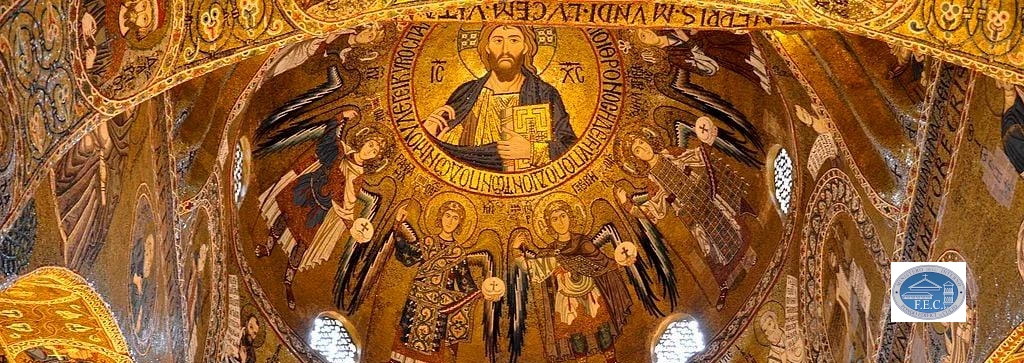
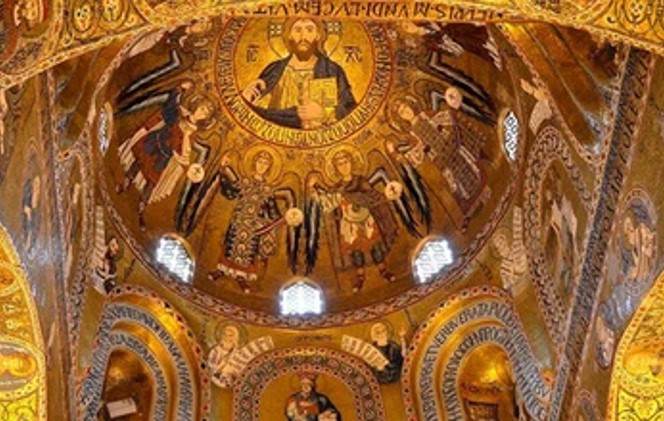
True beauty comes from within. Nowhere is this truer than in the Palazzo Reale (Norman Palace) in Palermo. Built by Norman King Roger II in the medieval city centre, the palace guards a sparkling treasure inside: the palace chapel "Cappella Palatina". In this article you will learn why it is considered the most beautiful court chapel in the world.
by: Eugenio Rusignuolo | 07 Dec 2021
If you walk along Corso Vitorio Emanuele, leaving the cathedral on your right, a few metres uphill on your left is the Norman Palace (Palazzo dei Normanni or Palazzo Reale).
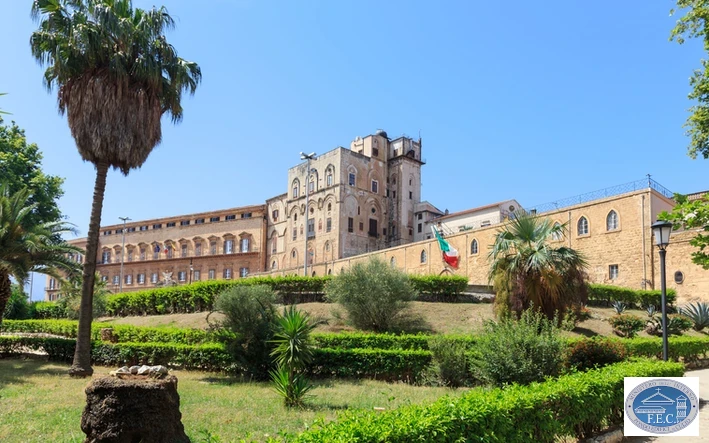
The roots of the historic building go back to antiquity. During excavation work, wall remains of a Roman fortress were discovered under the palace. Today, you can visit part of these excavations in the exterior area of the palace.
The oldest components of today's palace date back to the 9th century, when Sicily was under Arab-Muslim rule. The Emir of Palermo had a castle built on the old fortress foundations, which served primarily as a military fortress. In Arabic it was called "Qasr".
In the 11th century, the Normans conquered Palermo and took power in the city. Roger II chose the Arab castle complex as his ruler's residence and immediately commissioned extensive building work.
A large part of the architectural elements that have been preserved today date from this period. These include the "Stanza di Ruggero", King Roger's private room.
Its walls are panelled with marble, the ceiling lavishly decorated with gold mosaics. In the middle of the hall is another treasure, a table made of petrified Sequoia wood.
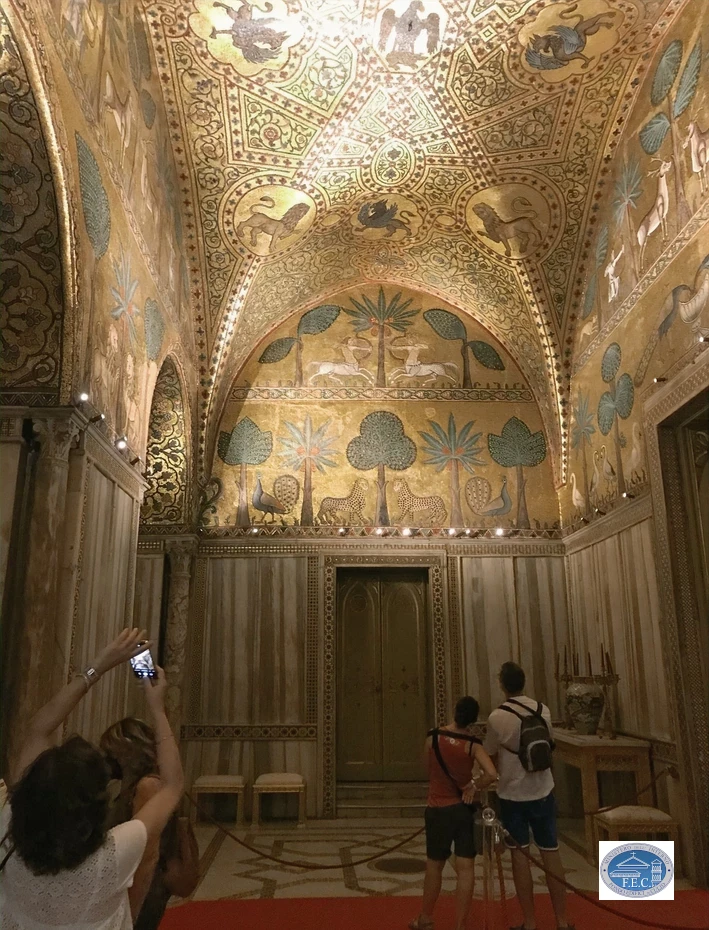
Also preserved is the "Sala dei Venti", the Hall of the Winds. Originally, it was an open atrium that formed the anteroom to Roger's private room. Only later was the room fitted with a wooden ceiling supported by several columns and pointed arches.
The characteristic blind arcades on the outside of the palace also date back to the Norman period.
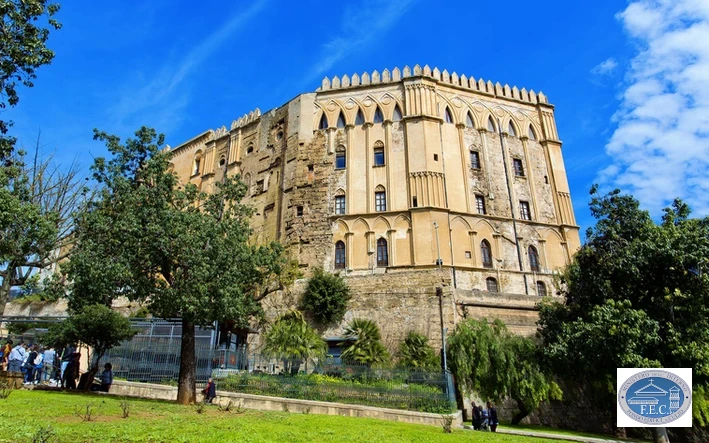
The main attraction of the Norman Palace, however, is undoubtedly the court chapel, the so-called Cappella Palatina. If you don't know it, you wouldn't guess from the outside that there is such a sparkling treasure in the middle of the palace. So don't let the plain façade or the high entrance fee deter you from visiting the palace from the inside.
The chapel was built between 1132 and 1140 by order of Roger II and is today, still 900 years after its construction, one of the most extraordinary buildings in the world.
Facts about the Cappella Palatina:
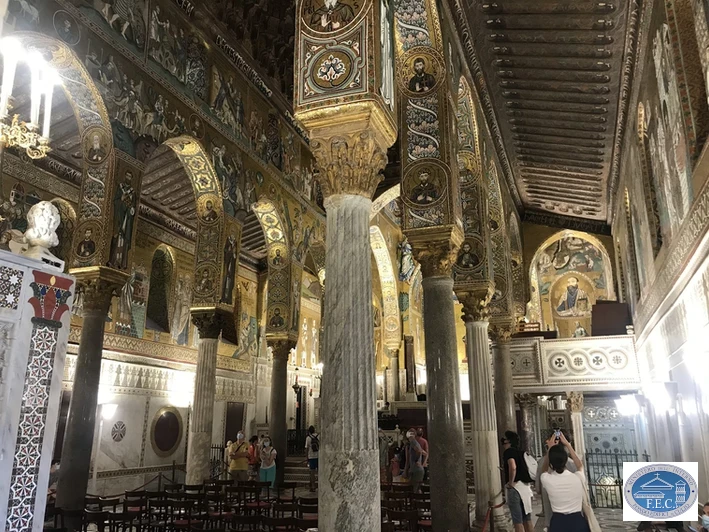
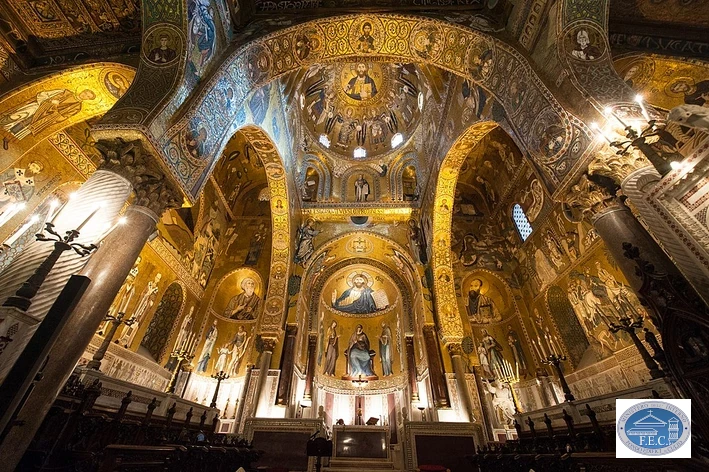
Before we look at the interior in detail, for which the chapel is world-famous, let's go back two years to the year 1130. Roger II has just made Palermo his headquarters and moves into the old Arab fortress as his seat of government. For him, as for any Christian ruler, it is now a duty to give his crown a sacred setting and so he has a first chapel built.
However, this is not yet the Cappella Palatina of today, no. Rather, one of the details of the current chapel is that it was built directly above the first one. Today, the less well-known first chapel serves as an underground crypt, but it is inaccessible to visitors. In any case, in 1130 it was the first chapel of the palace and the place where Roger II was crowned king.
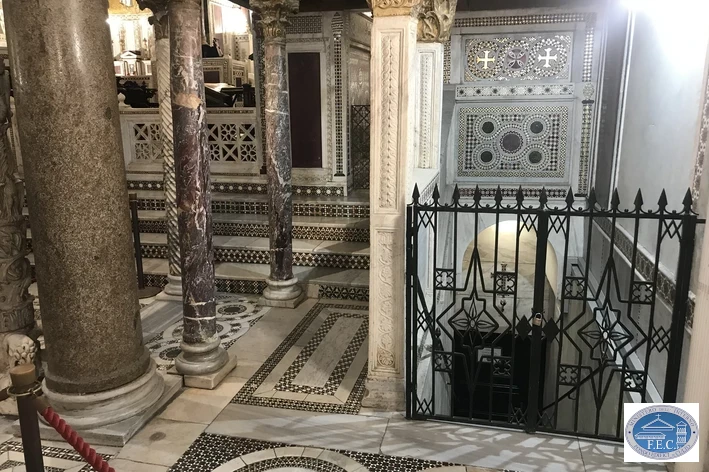
To thank God for his earthly crown, the newly crowned Norman ruler decides that another new chapel should be built and become the grandest structure ever built. ever built in honour of God.
But it is not only the visual appearance that later and still today makes the Cappella Palatina a special building and the most beautiful court chapel in the world. It is Roger II's message, visually manifested in every corner of the chapel, that gives it a special place in history. To better understand the significance of the building, let's briefly go back in time.
This period is marked by religious wars, conquests and massacres. The rule of the new king is also controversial. He is a young man, a stranger in Palermo, a Norman and has relatively few men in his entourage. His new subjects in Palermo, however, are Arabs, Greeks, Jews, Albanians, Alexandrians or even Persians.
The young ruler knows that he will not be able to control this explosive mixture of peoples in Sicily by force in the long run and decides on a policy that is unusual for the time. He proclaims an age of tolerance. His vision is that every people, every religion should have its place in his kingdom and Palermo should become an enlightened place of religious freedom.
He immediately had his decree of tolerance written in three languages and immortalised on the walls of his chapel as a signal to the followers of the different religions: in Arabic, Latin and Greek.
At a time when a large part of the population cannot read, illustrations are an important and impressive means of reaching the population and communicating the vision of tolerance. The palace chapel as a visual medium has been a showcase of Roger II's philosophy from the very beginning and fulfils this communicative function to perfection.
The Cappella Palatina is best known for its lavish gold-ground mosaics depicting a series of scenes from the Old and New Testaments.
According to art historians, the skill and aesthetics that distinguish the mosaics of the chapel have not been achieved anywhere else.
Gold and silver have been worked into the glass in fine sheets, giving it its radiant shine. And other precious materials such as marble or serpentine shimmer where no gold or silver has been used.
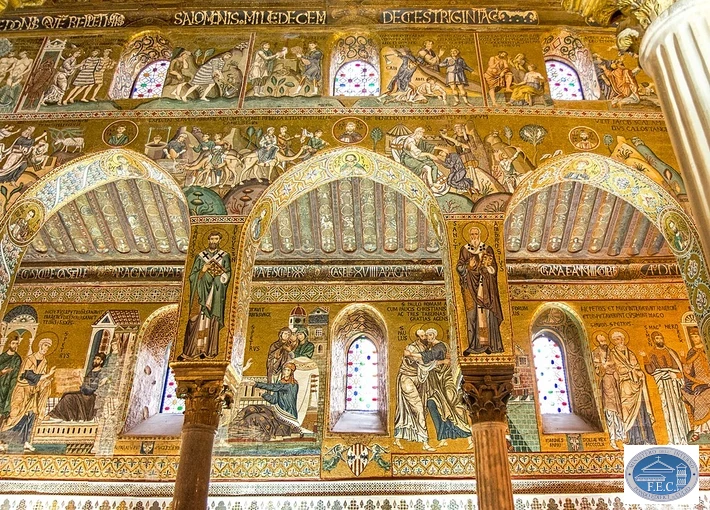
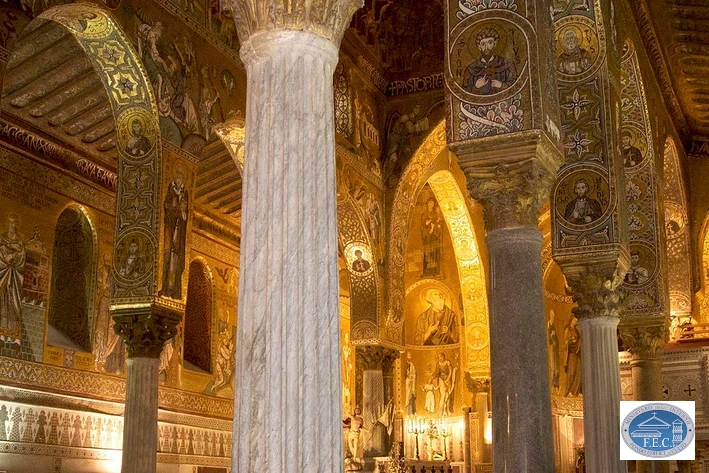
In the dome of the chapel, Christ is depicted as the "Pantokrator" - i.e. the ruler of the world - surrounded by eight angels.
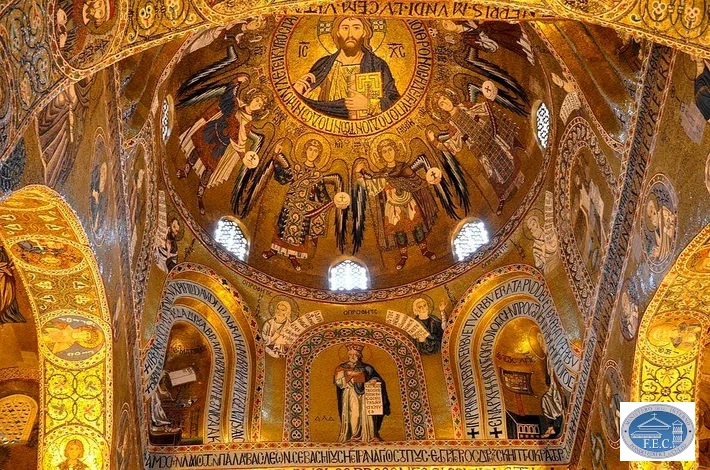
On the side walls, episodes from the Old Testament are presented in chronological order, beginning with the biblical story of creation. In addition, important stations from the lives of Christ and Paul are staged.
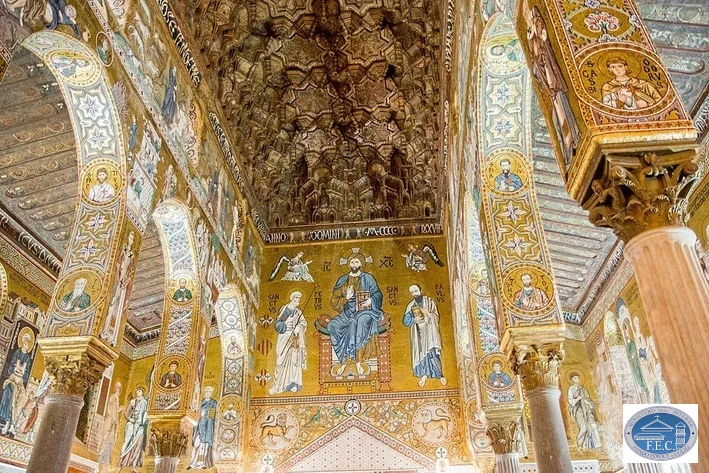
While the walls of the nave are reserved for the Christian faith, the ceiling, on the other hand, is to be dedicated to the diversity of cultures that Roger II wanted to exist together under his rule. For this purpose, Roger II had craftsmen from Morocco and Libya come to create the all-wood ceiling of the chapel.
The ceiling is a never-before-seen triumph of woodcarving art. The frames, intricately carved by North African carpenters, contain honeycomb and stalactite-shaped structures. These are then painted by Egyptian artists and depict secular motifs such as freedom, dance, joy, music or play.
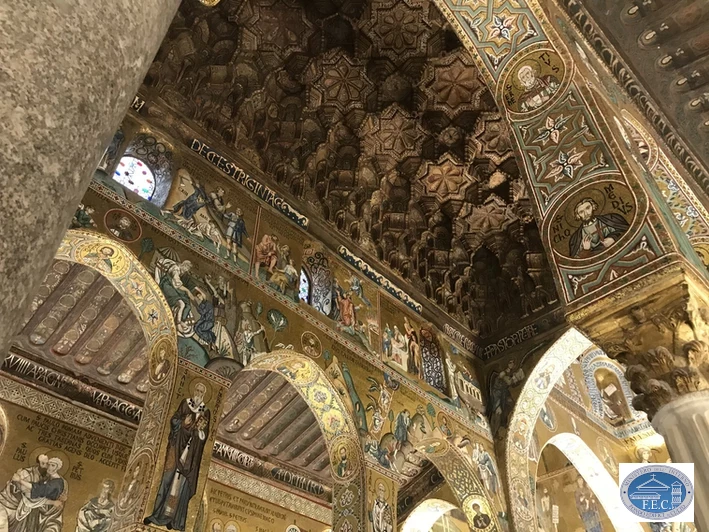
And an effigy of the ruler is also immortalized in the chapel. Look for the image of Roger II, whose posture is depicted in a way that appeals to each of his peoples. Thus, with a crown, his beard, his long hair and the wine that symbolizes the blood of Christ, he is recognizable as a Christian ruler. But he also sits in an oriental way with his legs crossed on the ground.
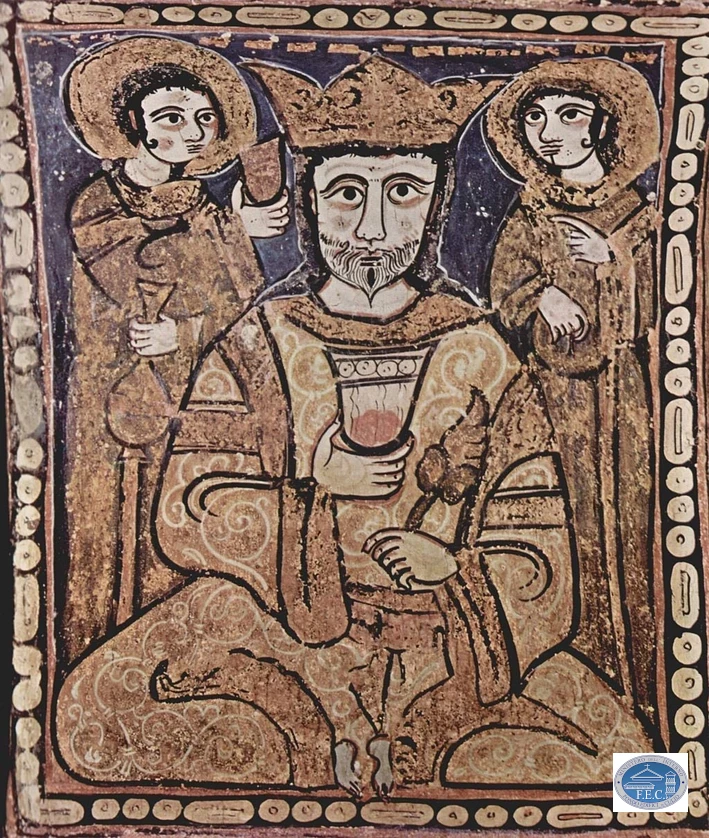
The chapel's precious marble floor with its intricate patterns is also impressive. Purple is considered the color of the powerful in ancient times. The purplest and at the same time most precious marble is porphyry, which comes from Egypt. Roger II had it placed in large slabs in the walls and floor of the chapel, illustrating the importance of the site as a place of centered power.
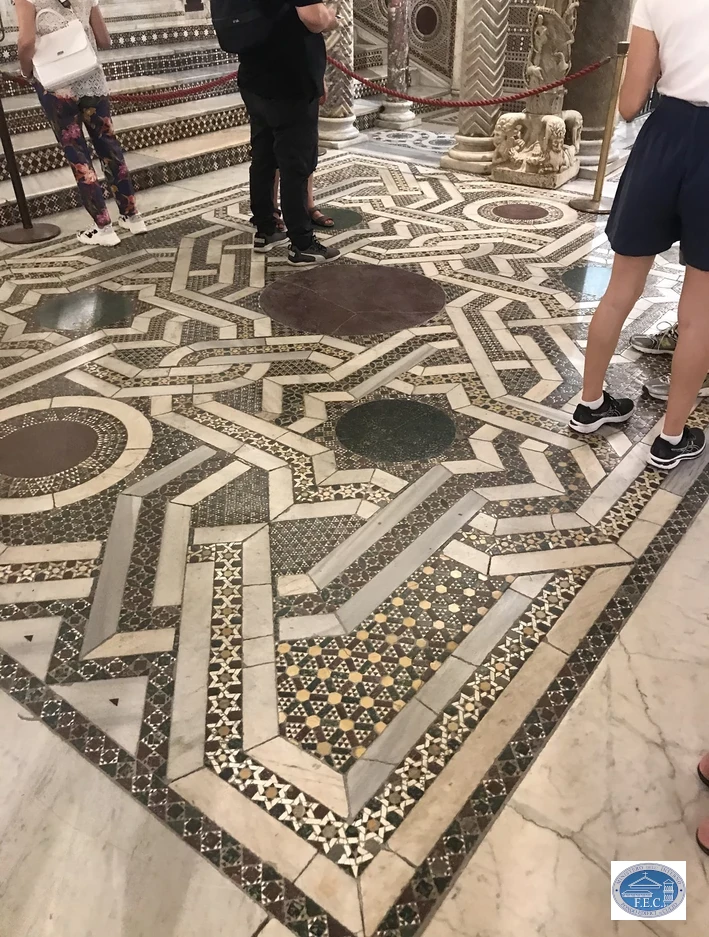
When you stand in front of the main altar, look at the marble slabs in front of it. Here the place of Roger II during the mass has been provided on the largest porphyry slab. It is deliberately placed under the image of Christ in the dome.
The pictures of the chapel conceal many details that are only revealed to the eye of the initiated, but are remarkable Three of them we present to you below.
On the floor to the left and right of the main altar, serpentine dragons symbolically watch over time. The two dragon bodies in the form of a lying eight are supposed to connect the place with eternity, the infinite. The symbol for this is even then the eight.
One detail that doesn't immediately catch the eye, but points to an amazing fact, is the depiction of the earth in a mosaic painting. At that time, it was still generally believed that the earth was flat, but Roger has it depicted as round, long before this is generally accepted scientifically.
The knowledge about it he has from the Arab al-Idrisi, the most learned astronomers of these days. The cartographer, geographer and botanist presented manuscripts to Roger II, The cartographer, geographer and botanist presents Roger II with manuscripts from ancient Egypt that prove that the Egyptian rulers already assumed two centuries before Christ that the earth was round.
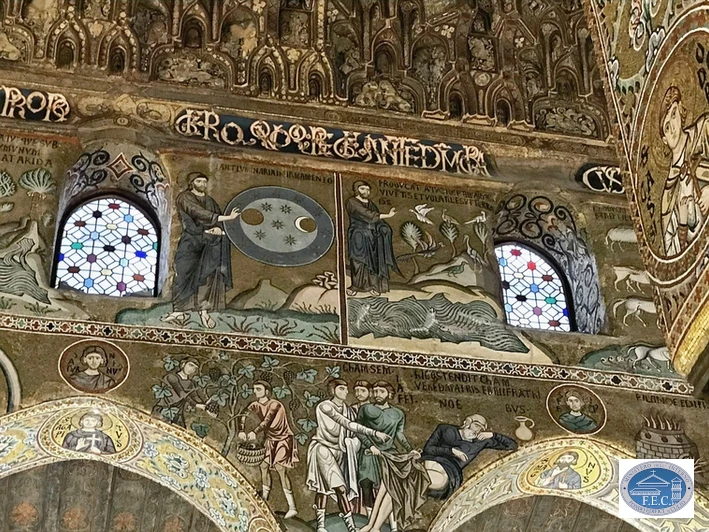
Roger II's modernity is evident in all the details of the chapel and continues to delight art historians to this day. Some mosaics revolutionized the art of their time. Especially the mosaic of Christ's entry into Jerusalem fascinates to this day. The perspective depiction of the entry anticipated the rules of the Italian Renaissance, which would change the image of man in Europe only two centuries later.
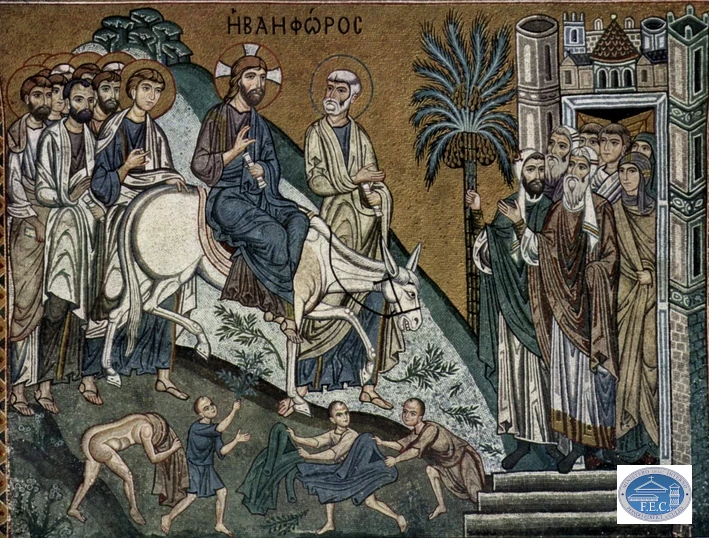
For 12 years the craftsmen put their art at the service of Roger II and his message. In 1142, 2 years after the consecration, he sees his work completed, with the finished mosaics in the sanctuary.
To celebrate the event, Roger II has it immortalized on a block of marble and out of respect for the other religions according to their calendars. For the Christians the year 1142 in Latin, for the Jews the year 6650 in Greek and for the Muslims the 536 in Arabic.
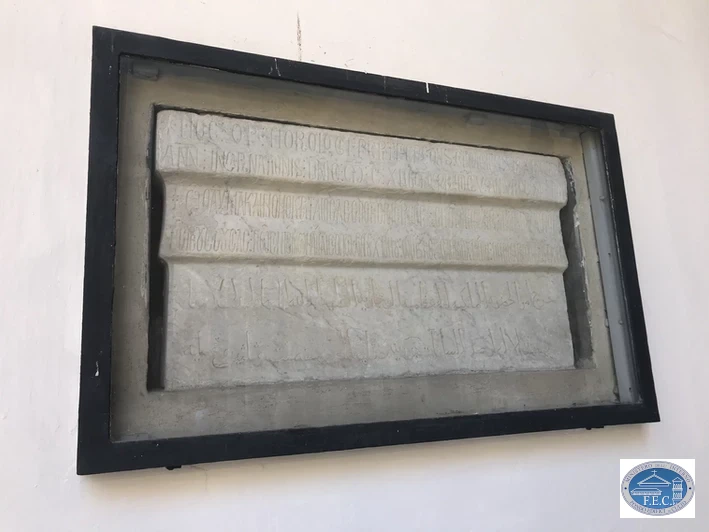
After the decline of Norman rule, the palace fell into disrepair until it was rediscovered and restored in the 16th century by the Spanish viceroys. The facades and paintings in Renaissance style date from this period.
Until the 19th century, renovation and reconstruction work took place again and again. Therefore, the Norman Palace today has very different stylistic elements from different cultures and eras.
The Spanish viceroys had three of the original four Norman towers demolished, leaving only the so-called "Torre Pisana".
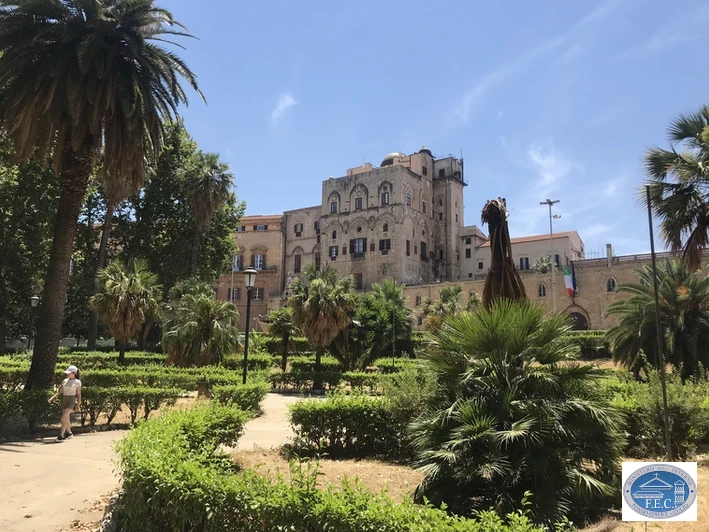
The Torre Pisana is joined on the left by the Renaissance façade on the east side of the present palace, with the large entrance portal in the center.
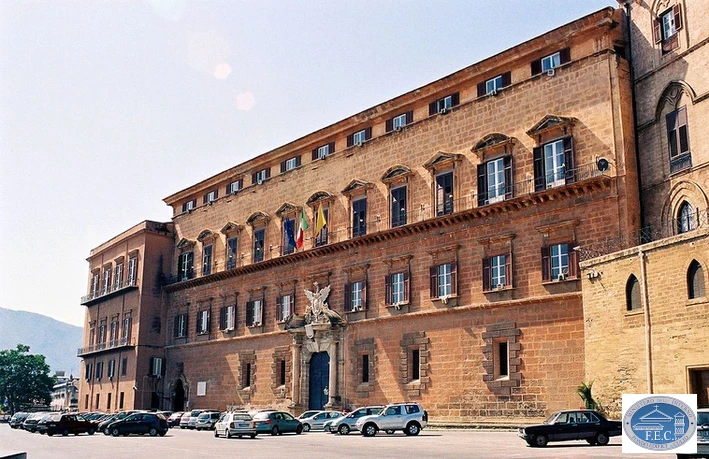
Our tip:
In front of the Renaissance wing is the park of Villa Bonanno with the monument to Phillip V from 1661, which is worth seeing. Take advantage of the grounds for a walk and the statue with the palace in the background for a photo.
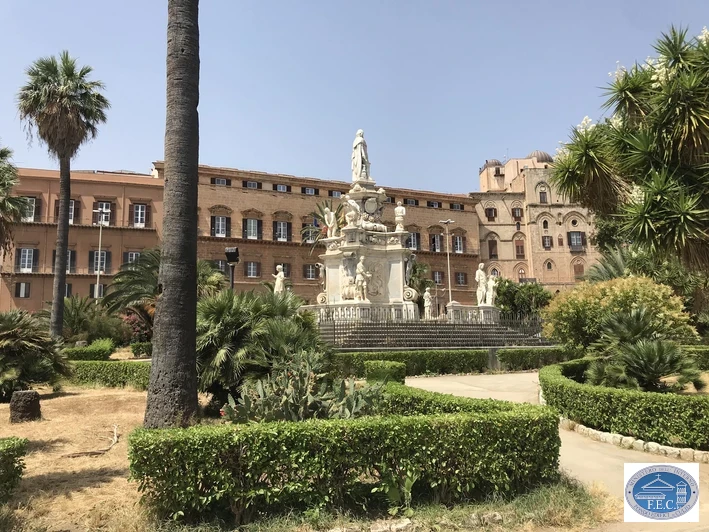
The former military facilities were dismantled at the time of the Spanish viceroys. Instead, a number of other elements in the Renaissance style were created. These include the "Sala de Ercole", the Hercules Hall. Since 1946, it has served as the parliament's meeting hall. Visitors can see it today on guided tours.
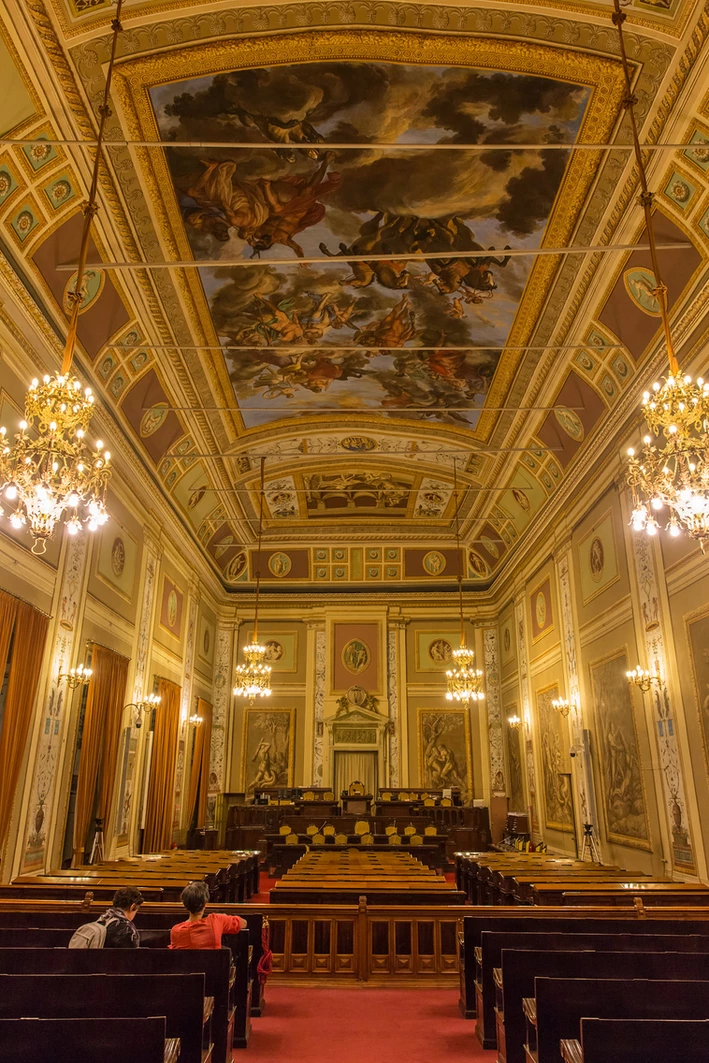
Also from the time of the viceroys is the Porta Nuova, a magnificent gate to the west of the palace.
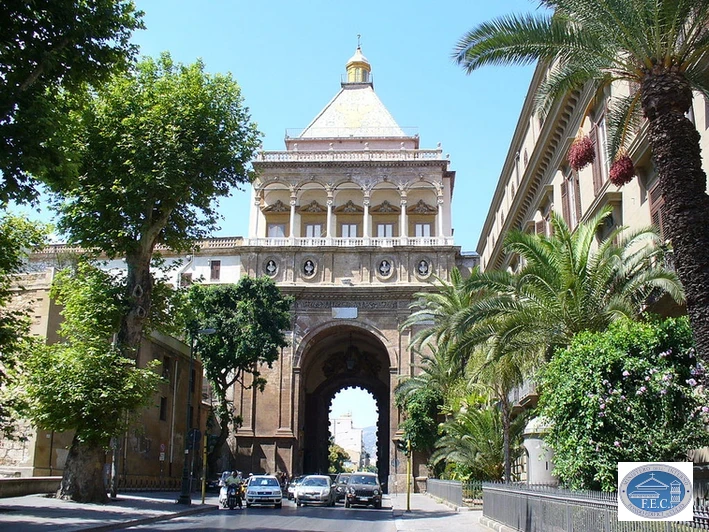
In addition, the courtyards with their magnificent porticoes were redesigned from the 16th century.
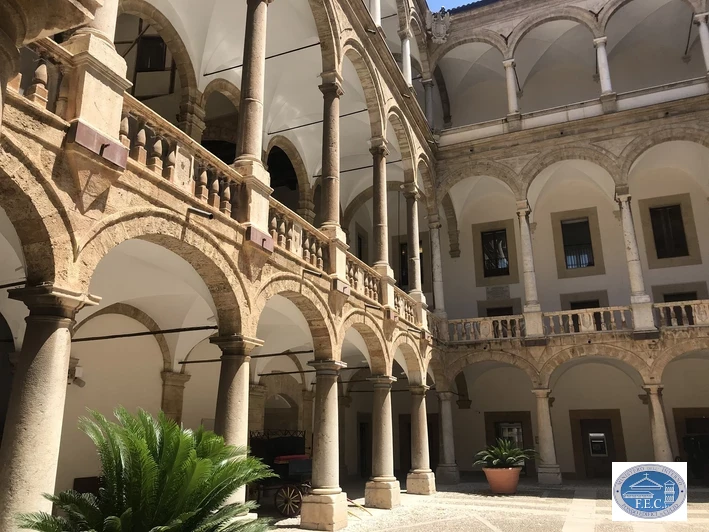
The Chapel of the Norman Palace in Palermo still amazes the world with its visual beauty and the unmatched richness of its mosaics and ceiling.
It is a work with which Roger II built a bridge between peoples and incorporated details that were ahead of their time. Art historians agree that in his enlightened kingdom of Sicily and Naples it marked the birth of the Italian Renaissance.
The French writer Guy de Maupassant already called the Cappella Palatina "the most beautiful chapel in the world". We agree with him and recommend a visit when you are in the Sicilian capital.
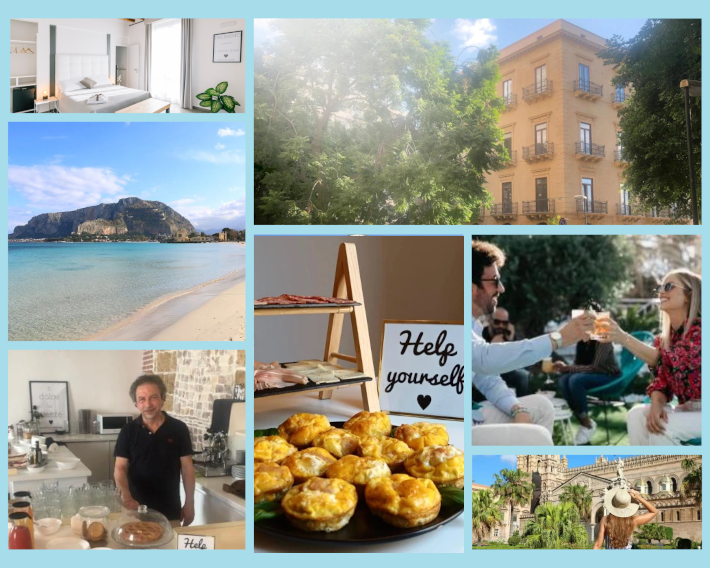
Many travellers want quality accommodation with an authentic atmosphere. At Boutique BnB Dolcevita we offer modern rooms and warm service so you can feel like a local for a while.
More info on the Boutique BnB Dolcevita